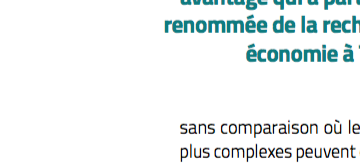Daniel Ershov joined TSE in September 2017 as an assistant professor. His main research interests are firm competition, market regulation, and online markets. He recently worked on the Google Play Store recategorization of applications and tells TSE Mag about his main findings.
Contrary to expectations, the Internet did not eliminate consumer search costs. Indeed, with the proliferation of product varieties, “discoverability” online is a major concern for consumers, firms and regulators. Firms may not want to enter or invest in high quality products if they cannot be found by consumers. Regulators are concerned that platforms, by changing search algorithms and consumer search costs, can influence firm entry, investment incentives and the degree of online competition. These considerations played a role in the European Commission’s 2.4 billion euro fine to Google.
While there is a large existing literature on search costs, it mostly focuses on the effects of search costs on prices and largely ignores non-price effects such as entry or product quality. These non-price effects are important, particularly in the numerous online markets where prices are uniform (e.g., iTunes) or are zero (e.g., SoundCloud). In a working paper titled “The Effect of Consumer Search Costs on Entry and Quality in the Mobile App Market” I examine how consumer search costs in online markets affect market structure, product variety, quality, and consumer welfare.
I empirically study these effects using new data from the Google Play mobile app store, a large online market where most products are free to download. App stores have a large number of products: thousands of new apps appear every week, and it is costly for consumers to search for new products.
App stores are broadly separated into “game” and “non-game” areas, and surveys suggest that consumers primarily search for apps by browsing through categories in the app store (e.g., “Productivity Apps”). I take advantage of a natural experiment: a re-categorization of part of the Google Play store. In March 2014, Google split its game categories from 6 to 18. Industry observers believe that this reduced consumer search costs. Before the change, consumers browsing through the categories would see different app types together (e.g., Family Games and Action Games). Consequently, consumers looking for an app type would not necessarily find it easily.
The re-categorization of the store was a surprise to game developers. Additionally, it did not affect the “non-game” area of the store and non-game developers. I use difference-in-differences to capture three key effects: First, 33% more games enter relative to non-games after the re-categorization. Second, most entry effects are driven by “niche” app types that were more difficult to find before the re-categorization. Lastly, the quality of the new games – as measured by consumer ratings – fell after the split relative to new non-games. These results confirm existing theoretical predictions, but are new to the empirical literature.
The overall impact of the re-categorization on consumer welfare is not easily measured since most apps are free. In addition, the different effects of re-categorization can point in opposite directions. Consumer welfare should improve due to more product variety and lower marginal search costs. However, consumers should also like quality. Conditional on the number of products, a greater share of low quality products would reduce consumer welfare. A larger share of low quality products could also make it harder to find high quality products.
To measure and decompose the welfare implications of the re-categorization, I set up a structural model of consumer search and demand, and firm entry. I show that welfare increases by almost 60% following the re-categorization, and most of the welfare gains come from reduced search costs. Nonetheless, about 25% of the welfare gains are from increased product variety, which overwhelm the small negative effect of the change in quality. These results have important implications for anti-trust cases in online markets. They are the first evidence suggesting that when consumer search costs increase (the inverse of the decrease I observe), consumer welfare can decrease via two channels: a direct decrease due to higher search costs, and an indirect decrease due to a foreclosure effect that reduces product variety.



